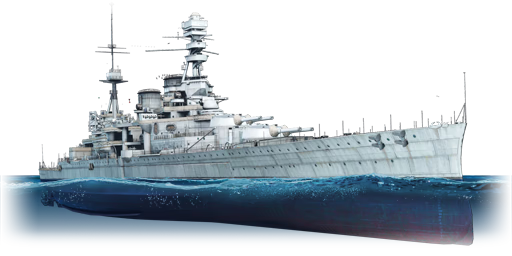HMS Repulse (34) was laid down in January 1915 at John Brown's Clydebank shipyard, launched in January 1916, and commissioned in August 1916. Serving as part of the Grand Fleet during the latter years of the First World War, she participated in the Second Battle of Heligoland Bight in November 1917 and witnessed the surrender of the German High Seas Fleet in November 1918. Following significant refits between 1918 and 1939 to improve armour, armament, and general capabilities, she spent much of the interwar period on peacetime exercises and tours, including escort duties and displays of British naval power. During the Second World War, Repulse patrolled the North Atlantic, participated in the Norwegian Campaign, and later formed part of Force Z alongside HMS Prince of Wales to deter Japanese advances in Southeast Asia. On 10 December 1941, while attempting to intercept Japanese invasion forces near Malaya, Repulse and Prince of Wales were overwhelmed by a concentrated attack from Japanese bombers and torpedo planes, sinking after multiple torpedo strikes. The wreck of Repulse, located in 1959 off the east coast of Malaysia, lies in 54 metres of water and is a designated war grave. However, recent reports of illegal salvaging, including the removal of artifacts and unexploded shells, have again drawn international attention to the vessel.
HMS Repulse was introduced in Update "Firebirds" in her 1941 configuration. Compared to her direct peers, Repulse's main guns offer above-average penetration but low damage output with both AP and SAP shells. While she is relatively resilient to flat-trajectory fire, she is very vulnerable to plunging fire, especially under oblique angles, even from light cruisers. Her mobility is fairly typical for a battlecruiser, making it easier for her to close the gap and approach preferred combat ranges than many other vessels. Overall, she is not the easiest vessel to play, preferring to break contact when under fire (e.g., by using a smoke screen from her floatplane) and targeting enemies that are prone to destruction from magazine explosions.














